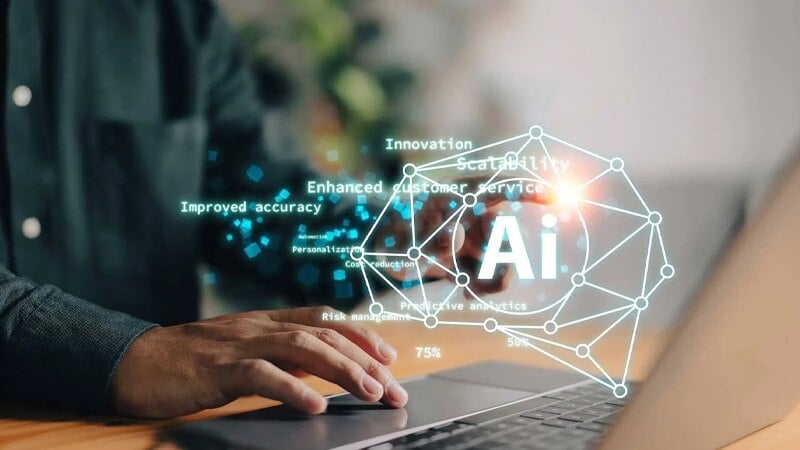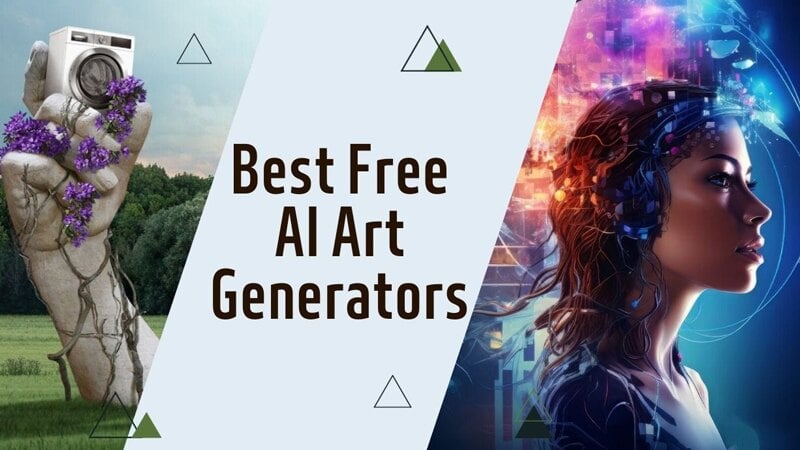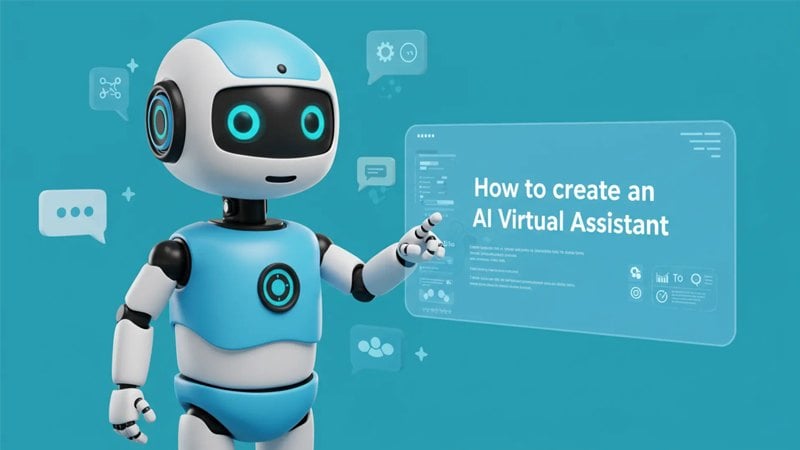AI is rapidly evolving—from today's generative models and adaptive assistants to tomorrow's autonomous collaborators and digital twins. Over the next ten years, advances in computing, data, and ethics will reshape every domain. Here's a forward-looking forecast of where AI will take us by 2035.

1. Where AI Stands Today (2025 Snapshot)
In 2025, artificial intelligence has reached a new plateau of capability, public visibility, and strategic importance. It is no longer a niche research field or novelty in consumer apps—it is a core infrastructure shaping business, culture, and society. To understand where AI is headed by 2035, we must first take stock of where it stands now.
Current Capabilities
As of today, AI excels in several defined domains:
-
Generative Models: Tools like ChatGPT, DALL·E, Midjourney, and Sora can generate text, images, video, and code based on prompts. These models operate on massive training datasets and have transformed creative workflows, content production, and ideation.
-
Natural Language Understanding (NLU): AI systems interpret, summarize, and translate human language with increasing fluency. They are used in customer support, virtual assistants, document analysis, and education.
-
Computer Vision: Image classification, facial recognition, object detection, and visual search are now widely deployed in security, retail, and healthcare.
-
Predictive Modeling: Machine learning models forecast everything from weather patterns and stock prices to disease risks and marketing outcomes.
-
Robotic Integration: AI powers autonomous vehicles (in pilot stages), drone navigation, smart home devices, and industrial robotics.
These systems are typically narrow in focus—they are powerful, but designed to perform specific tasks under defined parameters.
Key Application Sectors in 2025
AI is actively transforming a wide range of industries:
-
Healthcare: AI helps analyze medical scans, triage patients, and manage records. Tools like AI scribes reduce clinician burnout by automatically transcribing and summarizing appointments.
-
Finance: Automated fraud detection, algorithmic trading, credit scoring, and AI-powered advisors are becoming mainstream.
-
Education: Intelligent tutoring systems, AI-generated quizzes, and automatic grading tools assist teachers and personalize learning.
-
Retail and Marketing: Personalized recommendations, demand forecasting, inventory optimization, and chatbots enhance customer engagement.
-
Manufacturing: Predictive maintenance and AI-driven supply chain coordination are improving efficiency and uptime.
-
Media and Creative Industries: AI is generating visual content, music, articles, and even film scripts—shaping creative pipelines and influencing aesthetics.
Foundational Technologies in Play
Today's AI advances rest on a combination of key enablers:
-
Large Language Models (LLMs) trained on internet-scale corpora (e.g., GPT-4)
-
Transformer architectures enabling deep contextual understanding
-
Reinforcement learning and fine-tuning to improve instruction-following and behavior
-
Cloud computing and GPUs enabling real-time processing of large models
-
APIs and AI-as-a-service platforms that allow non-coders to integrate AI into workflows
-
Massive labeled datasets which provide the raw training inputs for supervised learning
2. AI in 2035: Predicted Capabilities
By 2035, we can expect:
-
Multimodal intelligence: seamless integration of text, image, voice, video, and real-world sensors.
-
Continuous learning agents: systems that adapt in real time to preferences, contexts, and new data.
-
Collaborative autonomy: hybrid workflows where human professionals and AI co-author, co-design, and co-decide.
-
Embedded cognition: AI built into environments—from smart homes that anticipate emotional states to cars that negotiate traffic.
These systems will shift from "smart tools" to "smart partners."
Table 1: AI Capabilities 2025 vs 2035
| Capability | 2025 Status | 2035 Outlook |
|---|---|---|
| General reasoning | Prompted by humans | Adaptive, autonomous, continuous learning |
| Multimodality | Separate vision, text, speech tools | Fully integrated unified perception systems |
| Personalization | User settings, prompt presets | Real-time learning from behavior and emotion |
| Autonomy | Limited actions via APIs | Goal-directed self-executing agents |
| Governance | Patchwork guidelines |
International regulation and supervision |
3. AI in Healthcare by 2035
By 2035, AI will transform healthcare in groundbreaking ways:
-
Autonomous diagnostics
-
AI agents will interpret X-rays, MRIs, pathology slides, and even genetic markers independently to diagnose diseases with accuracy rivaling expert clinicians. Patients may receive home-based scans with actionable results delivered instantly.
-
Personalized drug design & treatment
-
Generative models will design molecules tailored to an individual’s biology. AI will instantly create bespoke medication regimens—effectively biologically personalized therapies devised in hours, not years.
-
AI‑assisted surgery
-
Surgical robots will work alongside surgeon‑supervisors, guided by generative visual assistants. They’ll adjust in real time based on patient vitals and anatomy changes, reducing risk and improving outcomes.
-
Digital twin patient models
-
Patients’ real-time physiological and lifestyle data will feed live simulations—AI models that predict disease progression and proactively suggest lifestyle changes and medical interventions.
-
Continuous remote care
-
Edge AI devices will monitor vitals at home. Any anomalies will trigger automated telehealth check‑ins, pre‑emptive diagnostics, or ambulance dispatches.
Value: faster diagnoses, lower cost, fewer errors, and vastly improved patient outcomes.
4. AI in Education by 2035
Schools and universities will be fundamentally changed by AI systems that learn and adapt just as humans do:
-
Lifelong personalized learning
-
Every learner—from preschool to adulthood—will have a personalized “AI tutor” that adapts curricula, pacing, and materials based on real-time performance, assessment, and learning style.
-
Curriculum co‑creation
-
Instructors and AI will design lesson plans together: the AI analyzes learning goals, student data, and pedagogy, and generates sequenced activities that teachers refine.
-
Automated assessment with dynamic feedback
-
AI graders will handle essays, code, essays, oral exams, and projects—providing adaptive feedback and differing evaluation based on learner history and growth.
-
Immersive virtual instructors
-
Virtual teachers using mixed reality (MR/VR) will teach in multiple languages and cultural contexts around the globe. Students could have a virtual physics professor in 3D, capable of answering questions interactively.
-
Equalized remote education
-
Rural or underserved areas will gain access to world-class instruction via virtual teachers. Solar-powered edge servers will host local AI systems managing classrooms even without reliable internet.
Value: customized learning at scale, constant instructional feedback, and educational equity regardless of geography.
5. AI in Finance by 2035
AI systems will revolutionize how money is managed and monitored:
-
Autonomous financial advisors
-
AI agents will monitor every financial transaction, model cash flow, portfolios, and risk tolerance, and adjust asset allocations instantaneously—managing wealth autonomously under human goals and guardrails.
-
Smart banking automation
-
Full automation will handle loan approvals, insurance claims, compliance checks, and customer service queries. Chat agents capable of real conversation will be embedded in consumer finance.
-
Crypto & DeFi orchestration
-
AI will monitor blockchain-based financial activities across networks, regulating risks, predicting systemic threats, and rebalancing DeFi portfolios in real time using global transaction data.
-
Predictive risk management
-
Real-time stress tests simulating global events—climate, conflict, economic downturn—will allow proactive hedging and regulatory compliance before issues emerge.
-
Trade-as-a-service
-
Individuals and firms will contract AI brokers to execute trades across markets, with human-level reasoning but algorithmic speed—always monitoring sentiment, supply/demand, and news signals.
Value: higher returns, lower risk, faster service, and democratized access to advanced financial management.
6. AI in Manufacturing by 2035
The factory floor will be reimagined by end-to-end automated systems:
-
Unmanned intelligent factories
-
Physical plants will run autonomously—sensors, robotics, and AI controllers coordinate entire workflows without human intervention. Supervisors monitor remotely.
-
Digital twins and simulation
-
Real-world production systems will have mirrored digital replicas. AI will simulate adjustments, predict improvements, and test factory changes virtually before execution.
-
Predictive supply‑chain correction
-
AI will forecast demand, model delays, and reroute orders to avoid shortages. Small disruptions in sourcing or weather will be mitigated proactively.
-
Human–robot teaming
-
Cobots will assist humans, learning from them. AI-powered safety systems monitor posture, wear safety gear, and optimize human-robot collaboration in real time.
-
Adaptive quality control
-
Computer vision systems detect micro-defects and make instant quality decisions—e.g., rerouting faulty parts, adjusting machine tolerances, or triggering recalibration.
Value: zero-defect output, minimal downtime, and supply-chain resilience.
7. AI in Retail and Services by 2035
The customer journey will become a deeply personalized, consistent, and real-time experience:
-
Hyper-personalization
-
AI will fuse purchase history, biometric feedback, social media cues, and preferences to know you better than yourself—making predictive recommendations and experiential proposals in real time.
-
Autonomous storefronts and services
-
Walk into a retail store, and sensors tie your digital identity to your selection, guide you with AR overlays, and check out via facial authentication—no lines required.
-
Adaptive pricing and supply
-
Real-time analytics will adjust pricing or bundles based on traffic, competitors, weather, and stock levels managed by AI controllers.
-
Maximized service efficiency
-
AI attendants—voice or chatbot—will offer SKU explanations, suggest up-sells, and manage bookings or subscriptions seamlessly.
-
AI‑powered delivery systems
-
Fleet-managed autonomous vehicles and drones optimize delivery routes dynamically, powered by logistic AI agents tracking time, weather, and customer availability.
Value: frictionless experience, instant satisfaction, and real-time customization.
8. AI in Creative Industries by 2035
Creativity enters a new paradigm where AI becomes a full collaborator:
-
Generative content creation
-
AI can produce entire music albums, movie scripts, video sequences, digital art collections, or interactive narrative pieces—sometimes indistinguishable from human work.
-
Creative co‑authoring platforms
-
Artists, writers, and designers will work in sync with AI partners—providing direction and context, while AI generates drafts, concepts, and iterations in minutes.
-
Dynamic, personalized media
-
AI systems will produce individualized books, educational videos, or game narratives tailored to personality, life stage, or cultural background.
-
Virtual talent ecosystems
-
Digital avatars—AI models with human-like emotion, style, and voice—will perform in entertainment, hosting, customer service, or immersive experiences.
Value: democratized creativity, massive content scaling, and hyper-personal digital experiences.
9. AI in DUI Prevention and Enforcement by 2035
By 2035, AI is expected to play a decisive role in reducing driving under the influence (DUI) incidents—both through proactive prevention technologies and automated enforcement systems.
1. Real-time Driver Monitoring Systems
Vehicles will be equipped with AI-powered in-cabin sensors capable of assessing a driver’s:
-
Eye movement and blink rate
-
Reaction time to steering and braking
-
Posture stability and hand movements
-
Voice slurring or behavioral anomalies (via embedded microphones)
If impairment is detected, the vehicle can initiate:
-
Automated slowdown or stop sequences
-
Lockout systems preventing engine start
-
Emergency service alerts or contact with a designated guardian
2. AI Breath and Blood Alcohol Detection
By 2035, sensor technology integrated into steering wheels, seatbelts, or ambient air detection systems will non-invasively measure blood alcohol concentration (BAC) and detect intoxicants:
-
Passive breath analysis upon vehicle entry
-
Touch-based skin sensors reading alcohol levels through perspiration
-
AI pattern matching across driver behavior + chemical sensing
These systems can either:
-
Deny vehicle activation
-
Record the incident and notify authorities
-
Suggest ride alternatives (e.g., autonomous taxi dispatch)
3. Roadside Enforcement with AI
Police departments and highway patrols will employ:
-
AI dashcam systems capable of scanning vehicle trajectories and behavior in real-time
-
Drone-based sobriety checks equipped with thermal and biometric analysis
-
Real-time license scanning and driver profile analysis linked to prior offenses, risk ratings, and substance abuse records
Officers can receive AI‑powered risk scores before engaging with a driver, improving safety and reducing bias in field decisions.
4. Predictive DUI Prevention
With access to historical driving patterns, location data (e.g., bars, party zones), and time-of-day analytics, citywide AI systems can:
-
Predict DUI hotspots before they happen
-
Dispatch patrols preemptively
-
Redirect traffic or close high-risk routes temporarily
-
Recommend public transit or rideshare options through smart signage or mobile alerts
5. Rehabilitation & Monitoring
Post-DUI conviction, AI tools will assist courts and correctional services with:
-
Remote sobriety monitoring (via mobile breathalyzers or wearable sensors)
-
Virtual counseling or cognitive behavioral AI programs
-
Progress dashboards for judges and probation officers
-
Adaptive feedback for recovering individuals
10. Preparing for and Profiting from AI by 2035
Humans need not be passive: here's how to thrive:
A. How Individuals Can Profit from AI
-
Build micro-businesses: Use AI to generate images, write content, build websites, and sell products online with minimal overhead.
-
Monetize knowledge: Create video courses, blogs, or ebooks faster with AI—earn through subscriptions or paywalls.
-
Offer AI-powered services: Package automated email, summarization, or chat services for busy professionals.
-
Consult or integrate: Help local businesses deploy AI solutions—embedding ChatGPT, automating customer support, or integrating with ERP systems.
B. Skills to Acquire by 2035
-
Prompt engineering: Design clear instructions and multi-step tasks for AI to follow.
-
Data literacy: Understand model outputs, caveats, and validity.
-
Cross-disciplinary expertise: Combine AI with domain knowledge—like AI+finance, AI+healthcare, AI+art.
-
Human strengths: Focus on empathy, ethics, storytelling, leadership—skills AI can’t replicate.
C. Safeguarding Your Future
-
Build your AI ecosystem: Automate daily work—scheduling, drafting, summaries—until AI handles 40–60% of tasks.
-
Invest in AI: Identify durable platforms, open models, and data pipelines.
-
Community participation: Join AI forums, share notebooks, publish tools—credibility and skills grow together.
-
Human-first mindset: Let AI support, not replace, your role. Remain in control of decisions, alignment, and ethics.
-
Societal debates around digital relationships and AI rights.
-
Education systems teaching strategic use of superhuman AI companions
FAQs
Will AI take all jobs by 2035?
No, but work will evolve. Many repetitive roles may be automated, while new hybrid roles—prompt engineers, AI custodians, ethics officers—will emerge.
How safe will AI be in 2035?
With international standards, AI failure rates are expected to drop significantly. Human oversight will remain essential, and governance systems will audit and control risk.
What should people learn to stay relevant?
Mastering AI interaction (prompts), data literacy, domain knowledge, and human-centric leadership skills will be key.
Conclusion
By 2035, AI will move beyond tools into partners: diagnosing illness, teaching learners, and co-creating art in ways once imagined only in sci‑fi. Each industry—and every individual—can benefit if we prepare thoughtfully. The next decade isn’t just about smarter machines—it’s about smarter collaboration, reshaping society for the better.




